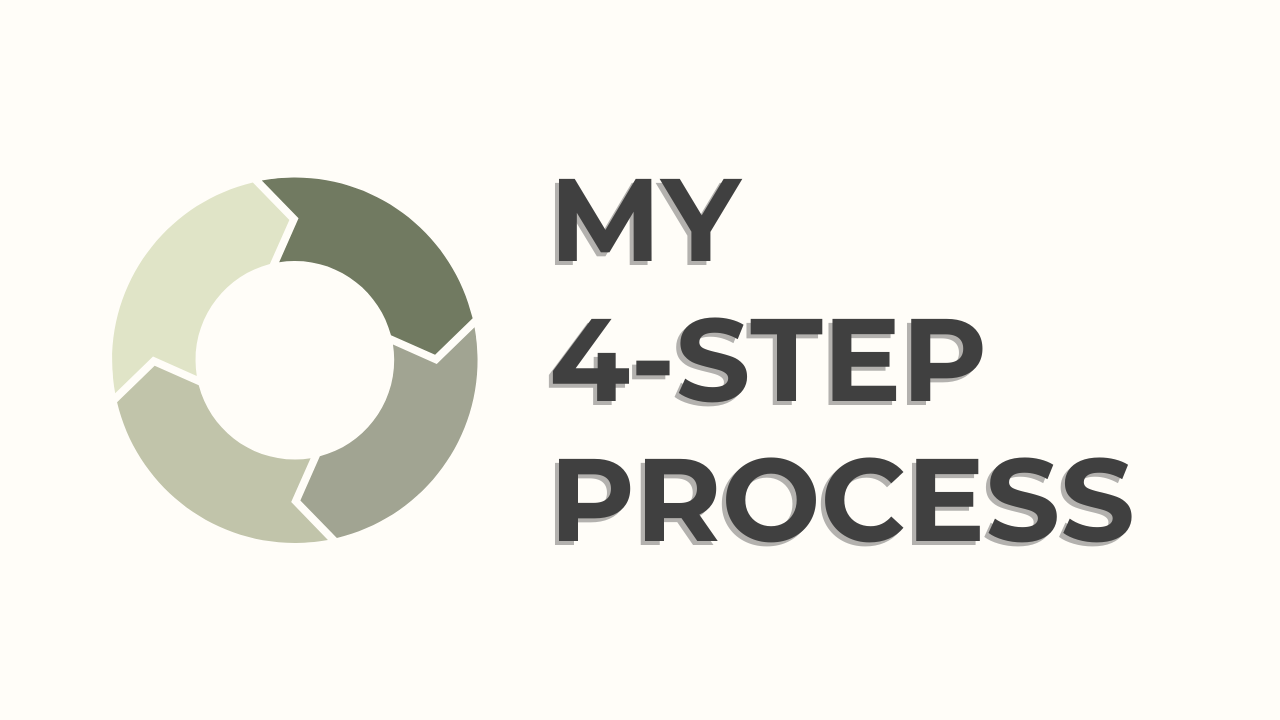My 4 Step Process
Mar 31, 2024
This is a process I have personally developed after years of trying to organize myself and my clients. It's pretty simple, but incredibly impactful when you figure out how to apply it.
Here it is:
- PRIORITIZE
- MINIMIZE
- ORGANIZE
- NORMALIZE
Most professional organizers jump in right at the ORGANIZE stage, and I think that just doesn’t work. It works for a short time and can look REALLY pretty in "before and after" pictures. But there are so many other factors that need to be addressed if you're going to create systems and structures that are SUSTAINABLE and MAINTAINABLE for your family.
So here is a quick breakdown of each step:
PRIORITIZE:
This step is a LOT of reflection and answering questions. This requires thinking about what is the most important thing to you? Why is it important? What is preventing you from making it the most important thing? How does your space need to serve you and your family? What are the non-negotiables for you? What are things that you are doing that you truly don't care about and can you stop doing them?
This seems simple - and it can be - but it's important for us to understand what we are truly trying to accomplish when we work on the steps that follow.
MINIMIZE:
This is just a fancy word for declutter (but I had to make it rhyme with all the rest of the steps - wink wink). It's not a difficult concept, but it can be difficult if you have a scarcity mindset or strong emotional attachments to physical items. If this step is hard for you and you struggle to let go of things -- I feel you. I am an emotional saver and I tend to slip into scarcity more than I would like.
I work with clients a lot about emotional attachments to their possessions and how to wrestle with the fear they won't have enough so every item needs to be kept. Every client is different and I allow them to be the one to choose what stays and goes - I just ask a lot of questions for them to understand and know why they are INTENTIONALLY keeping certain items. But I never judge anyone for the things they choose to keep or not. That’s not my choice to make because it's not my house and not my stuff. I just try to give clients fresh eyes and help them make that choice on purpose and not by default.
ORGANIZE:
I think this step is actually the most simple. The steps are basically the same and look something like this: pull out items, sort, get rid of unused or unneeded items, create structure with bins or dividers, put items away, label. Like I said… it's not rocket science.
There are a few fail proof principles to follow when it comes to organizing any space. Here are a few that can be used when you're planning on how to put things back in an orderly way: Create structure or designated spaces for certain items, use vertical space whenever you can, get items on walls, avoid stacking on flat surfaces, always pair like with like, know if you're an open container or closed container kind of person, reduce visual clutter whenever possible. These aren't rocket science either but can sometimes take creativity when applying these principles to different spaces.
NORMALIZE:
You've probably heard this referred to as "tidying up" -- but once again, that doesn't rhyme with the other three steps so I've called it NORMALIZE. This step is all about creating daily habits or flows to uphold your systems. This involves coaching yourself and other people in your household on how to keep those systems running. I use simple phrases like "don't put it down, put it away" or "putting the house to bed." I also try to keep simple rules like: laundry doesn't sit unfolded overnight or rinse dishes right away so nothing has to soak.
These habits are meant to maintain your systems while also giving you the flexibility to not uphold them all the time. They should create structure but also allow for freedom to not constantly be yelling at everyone or beating yourself up for not keeping them every time. I shoot for my systems to be functional about 75% of the time. This allows me the freedom some nights to snuggle and relax instead of do dishes or fold laundry. It allows me to be human and create space for human connection rather than be a robot that keeps a perfectly kept house. Habits are meant to make your life easier, not harder.
So that’s it! The 4 steps that I follow with EVERY SINGLE CLIENT and that I follow myself. The thing that’s AMAZING about how I've created these steps is that they aren't linear. You don't have to perform them in the same order over and over. So wherever you are in your journey (and depending on your level of overwhelm) you can start at different steps in the process.
For right now, if you want to do something but don't know where to start, I would suggest starting in the minimizing stage. Start to look at things with fresh eyes and just say goodbye to a few things that you know aren't useful.
SUBSCRIBE FOR WEEKLY LIFE LESSONS
Lorem ipsum dolor sit amet, metus at rhoncus dapibus, habitasse vitae cubilia odio sed.
We hate SPAM. We will never sell your information, for any reason.

